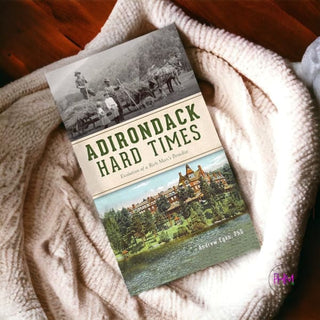Northern New York's Adirondack Mountains and the six million acres of the Adirondack Park evolved from a rugged, forested wilderness into a playground for the wealthy. Great camps where out-of-state tourists stay in luxury stand alongside economically struggling communities. Although some look to the Adirondack Park as a model for preservation, others, especially year-round locals, are critical of the park's persistent poverty marked by blatant inequality. These disputes are imbedded in the history of the region, as the creation of the park and expansion in the nineteenth century led to layers of land use regulation and bureaucratic control that resulted in competing special interests. Local author Andrew Egan explores the park's roots, how it became a rich man's paradise and the challenges facing the local community.
Northern New York's Adirondack Mountains and the six million acres of the Adirondack Park evolved from a rugged, forested wilderness into a playground for the wealthy. Great camps where out-of-state tourists stay in luxury stand alongside economically struggling communities. Although some look to the Adirondack Park as a model for preservation, others, especially year-round locals, are critical of the park's persistent poverty marked by blatant inequality. These disputes are imbedded in the history of the region, as the creation of the park and expansion in the nineteenth century led to layers of land use regulation and bureaucratic control that resulted in competing special interests. Local author Andrew Egan explores the park's roots, how it became a rich man's paradise and the challenges facing the local community.



